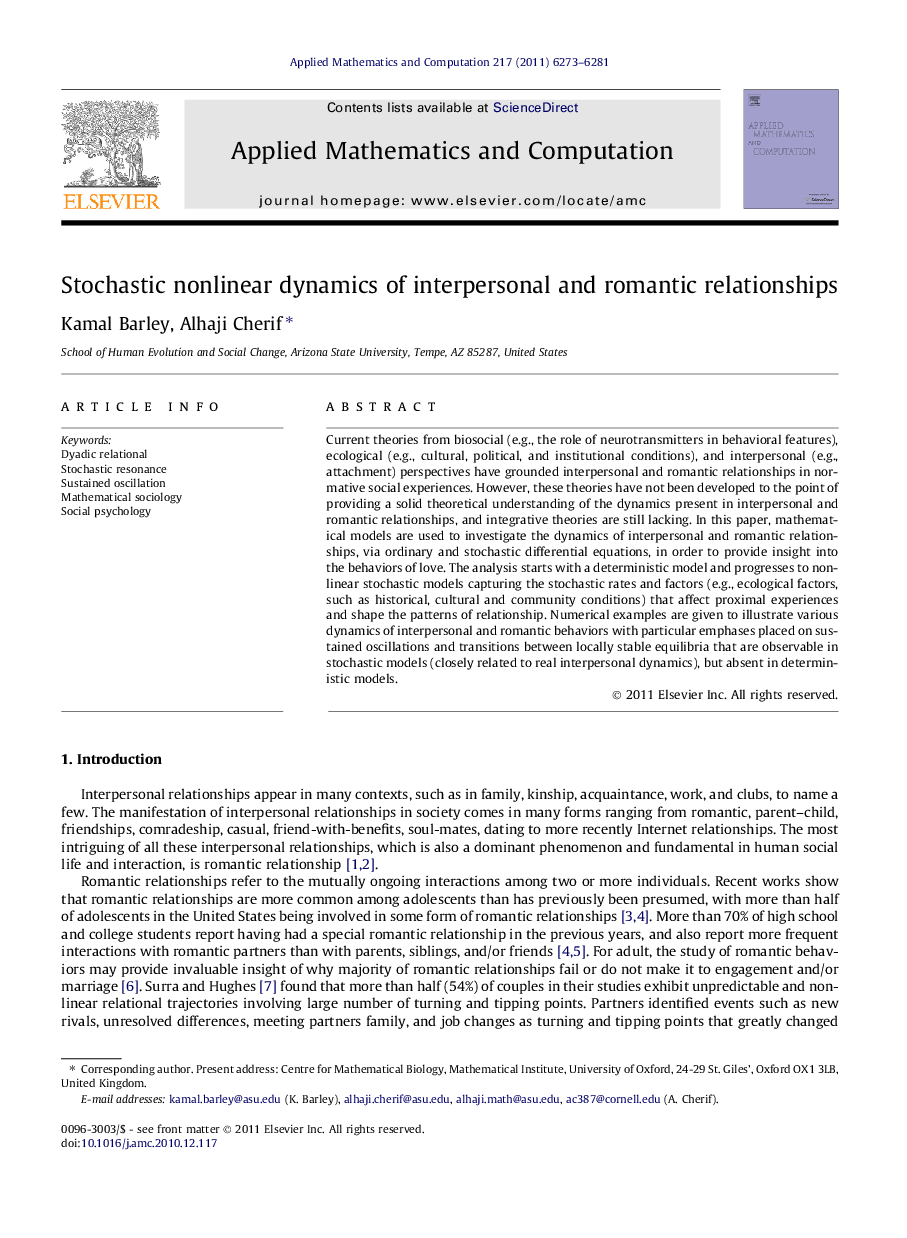| Article ID | Journal | Published Year | Pages | File Type |
|---|---|---|---|---|
| 4631487 | Applied Mathematics and Computation | 2011 | 9 Pages |
Current theories from biosocial (e.g., the role of neurotransmitters in behavioral features), ecological (e.g., cultural, political, and institutional conditions), and interpersonal (e.g., attachment) perspectives have grounded interpersonal and romantic relationships in normative social experiences. However, these theories have not been developed to the point of providing a solid theoretical understanding of the dynamics present in interpersonal and romantic relationships, and integrative theories are still lacking. In this paper, mathematical models are used to investigate the dynamics of interpersonal and romantic relationships, via ordinary and stochastic differential equations, in order to provide insight into the behaviors of love. The analysis starts with a deterministic model and progresses to nonlinear stochastic models capturing the stochastic rates and factors (e.g., ecological factors, such as historical, cultural and community conditions) that affect proximal experiences and shape the patterns of relationship. Numerical examples are given to illustrate various dynamics of interpersonal and romantic behaviors with particular emphases placed on sustained oscillations and transitions between locally stable equilibria that are observable in stochastic models (closely related to real interpersonal dynamics), but absent in deterministic models.
